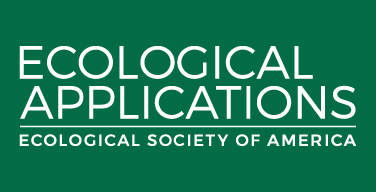
Study Finds Mutualistic Relationships Changing With Climate
As temperatures heat up, the beneficial relationship between certain ants and plants in Peru cools down.

As temperatures heat up, the beneficial relationship between certain ants and plants in Peru cools down.

New research indicates human-driven changes in gravel and salmon size impact the fish’s spawning success.

Central Africa’s unique bai ecosystems, a strategy for managing forests in a more flammable world, the protection of dead corals by secondary reef colonizers and a new approach to examining cause-and-effect in ecology.

A new study maps Congo’s bai ecosystems in unprecedented detail.

The Eiffinger’s tree frog has a unique biological adaptation: its tadpoles do not defecate during their early developmental stages.

New research examines how some plant species are adjusting to change and others are losing out.

Single female desert locusts are exposed to extreme heat during the day, but paired females are protected from the heat by the male riding on their backs, who act as a “parasol.”

Forest management aimed at reducing fire risk also promotes the resilience of forests to other disturbances.

CU researchers spent 400 hours under water observing these colorful fish in the Caribbean. They learned they’re smarter, and more neighborly, than previously thought.

A population of the Arctic diving seabird known as the Mandt’s guillemot was monitored over 50 years during a period of rapid climatic and environmental change.

A new analysis that combines census data and information on lakes finds that critical sampling and monitoring is less likely to occur in lakes surrounded by marginalized communities.

A team of Michigan State University researchers found that lakes in communities of color were three times less likely to be sampled at least once than lakes in white communities.

The impact of rising temperatures on pathogens, dynamics of predatory seabirds and their penguin prey in Antarctica, factors determining the speed of coral reef recovery from disturbance and more.

The findings shed light on how pathogens may be transmitted between wild and managed bees, as well as why pathogens in bees are changing and what can be done to reduce them.

New research suggests wildfires can help management efforts.

New research shows that backyard bird feeders are changing the chemistry of local ecosystems, including introducing a potentially harmful amount of phosphorus into the environment.

United States Department of Agriculture scientists have identified potential ecological benefits of strategically applied livestock grazing in sagebrush communities across U.S. western rangelands.

The findings have implications for urban forestry and heat island management efforts.

Benjy Sedano-Herrera, recipient of ESA’s Forrest Shreve Research Award, is finding international success through his research in a UNLV Life Sciences lab and his networking outside of it.

White House Office of Science and Technology Policy Representatives, Federal Agency Representatives and Authors join ESA at its Annual Meeting in Long Beach, Calif., to discuss the state of nature in the US.